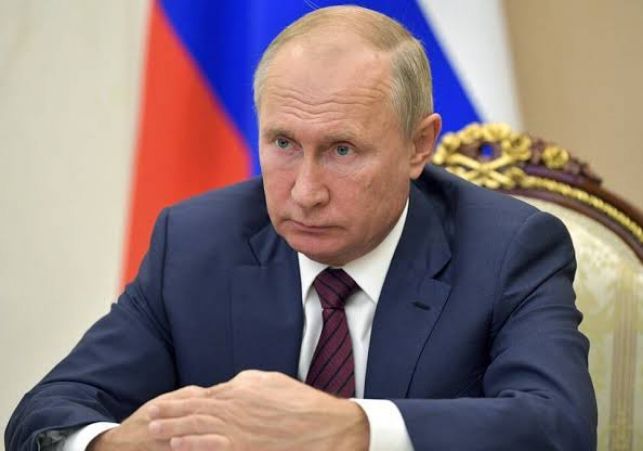

Senior Biden administration officials told lawmakers week that the Russian military had gathered 70% of the forces needed to launch a full-scale invasion of Ukraine, painting the most ominous picture yet of the options that Russian President Vladimir Putin has created for himself in recent weeks.
The authorities warned that if Putin picked the most aggressive of his options, he could soon encircle or take Kyiv, the country's democratically elected president, Volodymyr Zelenskyy, during six hours of confidential discussions with House and Senate leaders on Thursday. They also warned that the invasion might trigger a massive refugee catastrophe across Europe, with millions fleeing.
According to the officials, US intelligence experts have yet to determine if Putin has made a final decision to invade. However, satellite footage, Russian forces' communications, and images of Russian equipment on the move reveal that he has gathered everything he needs to launch the greatest military operation on land in Europe since 1945, according to officials.
They also warned of huge human consequences if Putin went forward with a complete invasion, such as the deaths of 25,000 to 50,000 civilians, 5,000 to 25,000 Ukrainian military personnel, and 3,000 to 10,000 Russian military personnel. According to them, the invasion might result in a million to five million refugees, with many of them fleeing to Poland.
Officials in the United States believe that if Putin decides to invade, he will not do so until the second half of February. By then, more land will have frozen, making it simpler to transfer heavy vehicles and equipment, and the Winter Olympics in Beijing will have ended or be winding down, thus allowing Putin to avoid antagonising Chinese President Xi Jinping, a key Russian friend.
The sombre briefings were the latest in a series of warnings from the Biden administration about Putin's intentions. The administration also publicly warned on the same day as the briefings that Russia may attempt to orchestrate a false-flag operation implying that Russian-speaking people are being assaulted, which could serve as a pretext for an overt military operation. The administration's drumbeat of warnings is part of a determined effort to expose Putin's tactics in order to increase international pressure on him and make plain to him the dangers of escalating the situation further.
The question that American, European, and Ukrainian officials are all debating is whether Putin will pursue a maximalist strategy or a more scaled-down version.
For example, European officials examining the same evidence suggest that Putin could start small and gauge the response — with cyberattacks to bring Ukraine's electric grid and communications to a halt, an invasion limited to Russian-speaking territory in eastern Ukraine, or a plan to divide the country in half along the Dnieper River. Officials in the United States have acknowledged the possibility, particularly if Putin wants to see if a lesser military strike will exacerbate European disagreements over whether to impose the most severe economic measures.
According to Western intelligence officials, Russian military leaders are confident that they can conquer Ukraine in a blitzkrieg strike, but are concerned that they will not be able to keep the nation, especially if the invasion sparks a large rebellion. This has sparked suspicion within NATO that Putin may invade Ukraine, attempt to replace the government, and then partially withdraw his forces.
Defense Secretary Lloyd Austin, Secretary of State Antony Blinken, Director of National Intelligence Avril Haines, and Chairman of the Joint Chiefs of Staff Gen. Mark Milley led the briefings to Congress on Thursday.
According to US sources, Putin has five options, depending on the extent of his aspirations and his calculations about whether he would rather try to capture the country in its entirety, regardless of the human and economic costs, or attack it in parts in the hopes of separating Europe and NATO allies.
A coup against Zelenskyy; a limited incursion into eastern Ukraine, similar to what Putin did when he annexed Crimea in 2014; an incursion into eastern Ukraine's Donbas region, followed by a Russian declaration of Donbas as an independent republic; or a Donbas incursion followed by an invasion and annexation of the entire country's eastern part.
The worst-case scenario is that Putin is planning to take over the entire country, which would almost certainly result in the biggest number of casualties and, probably, the most severe penalties from the US and Europe.
Putin, according to Milley, is investing on "military capability to do anything and anything, building himself a set of alternatives."
Officials in the room revealed the unclassified parts of the briefings to lawmakers to The New York Times on the condition of anonymity. Diplomats and intelligence officials from three other nations involved in the effort to prevent a Russian invasion corroborated the basic contours of Russian forces' condition, though they differed on the relevance of some details.
Sen. Marco Rubio, R-Fla., told reporters that a Russian invasion was a "near inevitability" after hearing from administration officials. "If we now live in an era where someone can walk into a country and just take it over and claim it as their own, I don't think it'll end at Ukraine," he continued, expressing concerns that Putin is attempting to redraw the geography of the continent to return to the Soviet Union's days.
Also read : In the midst of the Ukraine crisis, Russian warplanes pass over Belarus.